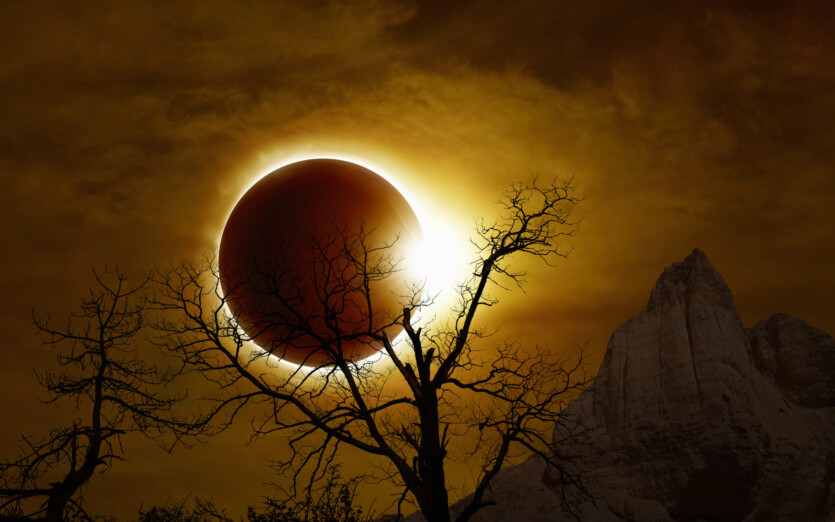
On August 2, 2027, the inhabitants of the Earth will witness an amazing full solar eclipse, which will last for 6 minutes.
The event is called the «Great North African Eclipse» and the «Eclipse of the Century». It will be visible to millions of people in Southern Europe, North Africa, and parts of the Middle East.
The total solar eclipse occurs when the Moon passes directly between the Earth and the Sun, completely obscuring the star. The eclipse, which will take place on August 2, 2027, will pass through several regions: from the Atlantic Ocean to parts of Europe, Africa, and the Middle East.
The eclipse will begin in the northern part of the Atlantic Ocean and will first be seen in the south of Spain, namely on the coast of Costa de la Luz in Andalusia. Then the eclipse will be seen by residents of Gibraltar. Then the eclipse will be seen by residents of other countries in southern Europe and northern Africa.
Residents will be able to see the eclipse Morocco, Algeria, Tunisia, Libya, and Egypt. In some parts of Egypt, the duration of the eclipse will reach 6 minutes and 22 seconds, in particular in cities such as Luxor and Berenika. Residents of Saudi Arabia, Yemen, and some areas in East Africa will be able to see the solar eclipse. In conclusion, the event will be observed by on the Chagos archipelago in the Indian Ocean.
In total, about 89 million people will be able to see the eclipse. For many eclipse enthusiasts, Luxor in Egypt will be the perfect place to watch the eclipse. The duration of the full phase will be 6 minutes and 20 seconds, making Luxor the best place on land to observe the longest eclipse from 2009 to 2114.
For those who want to avoid the extreme heat of Egypt and watch the eclipse, the more temperate climate of Tunisia may be suitable. Here, the total eclipse will be visible for almost 6 minutes. In the south of Spain, especially in Tarifa and Cadiz, the duration of the full phase will be up to 4 minutes and 39 seconds. Gibraltar will also be a great place to observe the eclipse at the moment of its first encounter with land, albeit for a shorter period.
The duration of the full solar eclipse depends on the ellipticity of the Moon’s orbit and its proximity to the Earth. When the Moon is closer to the Earth, its shadow covers a larger area and causes a longer phase of the eclipse The eclipse of 2027 will also occur near the equator, where the lunar shadow will cover a larger surface area. The combination of these factors makes this eclipse one of the longest and most spectacular.
Source: Daily Galaxy

Spelling error report
The following text will be sent to our editors: